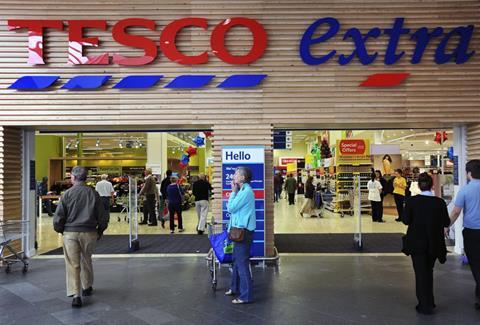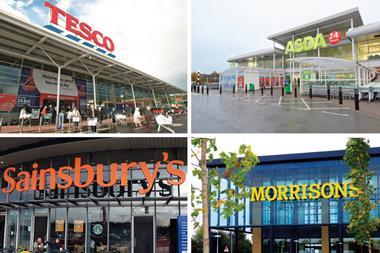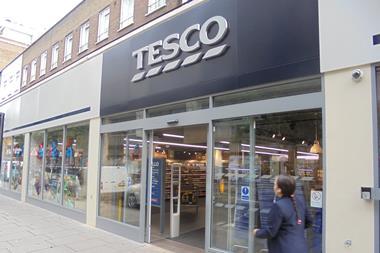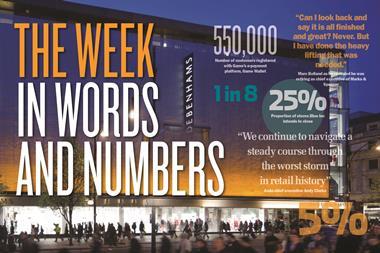Tesco’s price row with supplier Unilever may be resolved now, but it has sparked fierce debate across the retail sector.

A deal was struck after Tesco resisted Unilever’s plea to increase the price of its products, including Marmite, PG Tips, Pot Noodles and Ben & Jerry’s ice cream, in light of the slump in the value of the pound.
The grocer refused to raise the prices for customers and delisted a host of popular lines from its website.
The two sides may have reached a compromise; however, the row has raised some pertinent questions about the balance of power in the grocery world.
Below, Grocery Insight director Steve Dresser and Ged Futter, consultant at Innovative Retailing Solutions, have their say on the spat.
Love it: Tesco’s ‘consumer champion’ credentials

They say a week is a long time in football or politics, depending on your poison.
It’s an even longer time in retail where, just a week after lauding its recovery plan as having worked – taking it out of crisis into the potential for a margin-focused recovery – Tesco was embroiled in a fight over price with major supplier Unilever.
Of course, going back into the archives, at the peak of the credit crunch and discounter progression, Tesco was involved in a similar row with Premier Foods as the manufacturer attempted to push wheat price increases through to the shelf edge.
It sparked a delisting of various ranges and Tesco was accused of flexing its muscles against poor suppliers.
But on this occasion, the general reaction on social media appeared to side with Tesco, not Unilever. So what’s changed?
Tesco’s comeback
Well, Tesco boss Dave Lewis has been very focused on restoring the brand to some sort of glory, after years of being associated with building stores against local opposition, hurting suppliers, the horsemeat scandal and then of course the accounting issues too.
It has focused on customers almost exclusively, working hard with various bodies to develop trust and improve working practices.
Lewis is particularly proud of the brand awareness chart he always shares at every half-year, showing a positive climb in how Tesco is perceived.
It talks about customers a lot, simplifying the shopping trip, its price architecture and value credentials, including highlighting achievements like its Brand Guarantee scheme – which gives customers instant money off at the till if their branded shop would have been cheaper elsewhere.
Part of this customer-focused mission is heavily centred around price, particularly its differential to the discounters.
Raising prices ahead of Christmas isn’t on anyone’s wish list, but with the Brexit vote and pending inflation driven by the lower value of sterling, cost pressures are rising in the supply chain.
But retailers never want to take that hit at the shelf edge.
Tesco’s refusal to raise prices on Unilever’s products essentially means Britain’s biggest grocer is standing up for the consumer, telling them: “You will not have to pay more.”
Does Tesco think Unilever is just trying it on? The FMCG giant’s third-quarter accounts, revealed this week, state that the impact of the fall in sterling on its profits is just 0.14%.
Unilever’s request
So where is the request to raise prices by 10% coming from?
Supermarket deals are confusing in terms of margin, when you take into account factory gate prices versus delivered prices, the costs of shelf-ready packaging and promotions.
Bearing all of that in mind, a 10% price hike across the board doesn’t really make any sense.
But one would suspect a number of suppliers, looking at currency exposure, hedging and the prospect of oil price rises, will push cost increases into 2017.
We’re likely to see more of these skirmishes as inflation bites and the fuller impact of Brexit uncertainty hits home over the coming months and perhaps years.
Like this one, each disagreement will be resolved in time because suppliers and retailers need each other.
If they aren’t resolved, it’s the customer that ultimately suffers by being unable to purchase the products they want. However, Tesco will only offer those products at a fair price to shoppers.
The shocks of Brexit, David Cameron resigning and Donald Trump challenging for the White House are one thing, but Tesco as the customers’ champion? 2016 really has been just one of those years.
Steve Dresser, director of Grocery Insight
Hate it: The balance of power has shifted
Love it or hate it, spats between food manufacturers and retailers are a fact of life.
As Iceland chief executive Malcolm Walker said a few years back: “It’s the nature of life. Big suppliers bully small retailers and big retailers bully small suppliers.” But is that still true? Not to the same extent. Brands, both big and small, are vital to retailers.
The Tesco/Unilever negotiation was always going to be resolved. Unilever’s brands are amongst the biggest in the world – Marmite, for example, holds a whopping 85% market share. Not stocking them could lead customers to switch supermarkets.
Without brands like Marmite, Ben & Jerry’s and Hellmann’s, Tesco becomes an own-brand emporium like Aldi and Lidl, and even Tesco can’t compete with the German discounters on price.
Two giants
Tesco’s move to pull Unilever products was a classic negotiation tactic but this is not David and Goliath, this is two industry giants more than capable of looking after themselves.
Unilever is a global supplier which has been impacted directly by the significant changes in the currency market in the past four months. The pound has devalued significantly and is impacting its business, so should it carry the costs or should it pass them on?
I believe that in this world where transparency is of utmost importance, when costs have a direct impact on the ability of a business to survive, they should be passed on. This price wrangle has actually brought out a much greater concern about the small and medium-sized suppliers that are also being impacted by significant cost increases.
The impact of currency is being felt by many smaller suppliers that have not been able to hedge currency and are experiencing a significant increase in import costs. These smaller suppliers are the ones that need to pass on the increases or they will simply cease to exist.
For them it is not a case of working off lower margins, it’s a case of slim margins becoming a loss.
An opportunity
This is actually an opportunity for pragmatic and collaborative retailers to work with their suppliers to ensure that the diverse products that they supply are still available.
There is a fear among many suppliers that when they approach retailers with a genuine cost increase they will be given short shrift.
However, the sands have shifted and now more than ever before large retailers need these suppliers.
The innovation and ability to be fleet of foot is something that these suppliers offer and they ensure that retailers have a point of difference.
If the retailers all take a stance that they will not accept any cost increases because it is not in the best interest of the customer then they have to ask the question: “Do I just want to have the same big brands as everyone else?”
The cost of food will have to rise as the costs of manufacturing increases. Retailers and suppliers are going to have to find a way through this difficult inflationary period together.
Ged Futter, director of Innovative Retailing Solutions


























1 Reader's comment